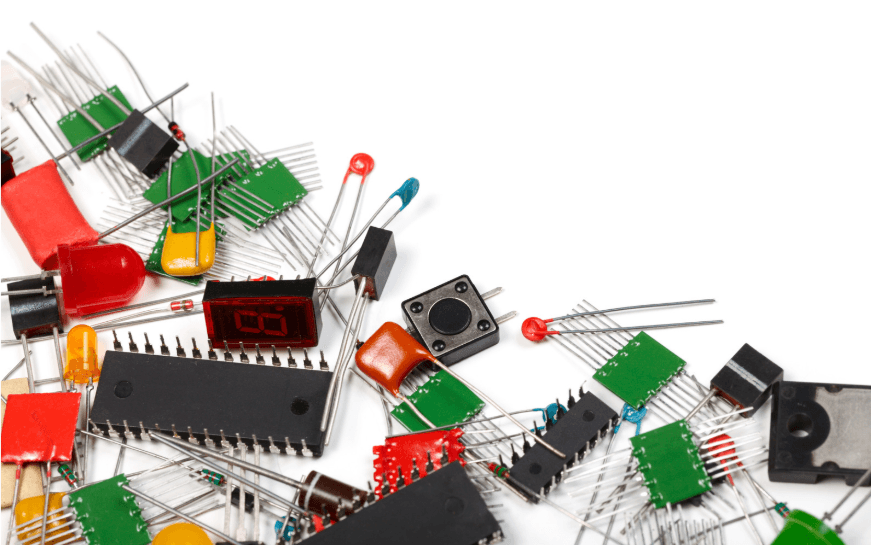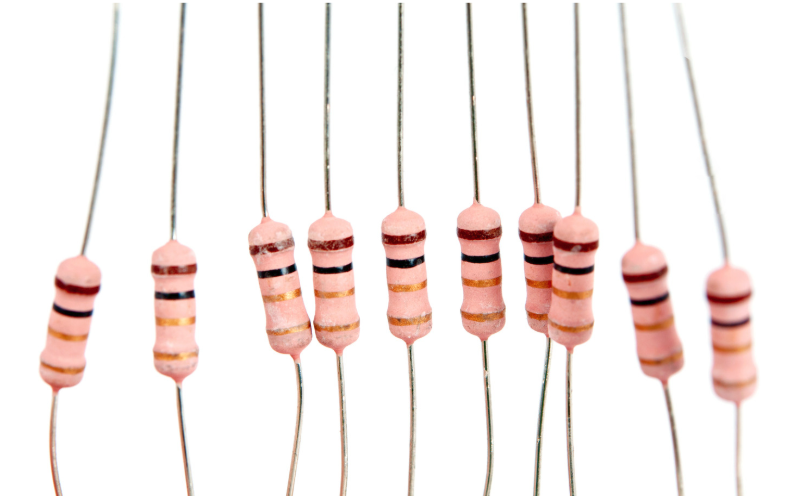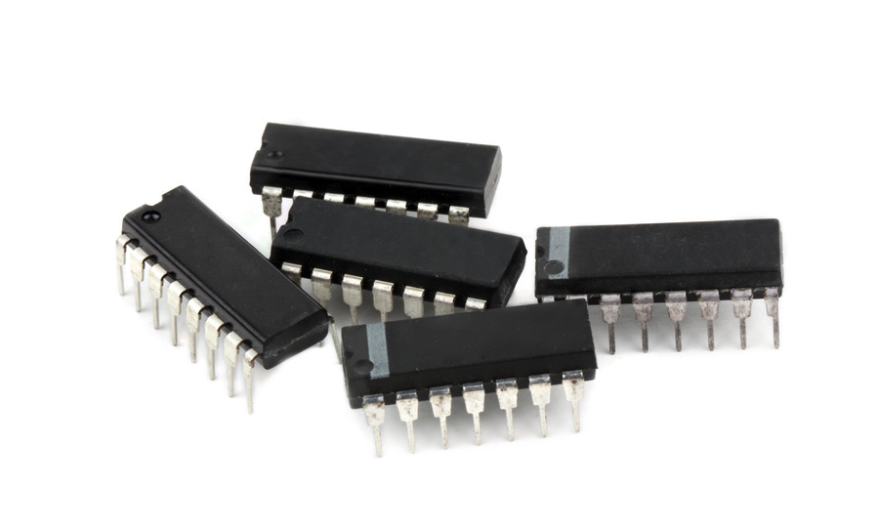Exploring Passive and Active Electronic Components

More from the Category
Every electronic system, from a simple LED circuit to a high-performance computing device, relies on a mix of passive and active components. Understanding how these components function and interact is fundamental to circuit design and optimization.
Engineers often categorize electronic components into two groups: passive and active. Passive components, like resistors and capacitors, manage energy within a circuit without requiring an external power source. They regulate current, store charge, and filter signals. Active components, such as transistors and diodes, require external power to function and are responsible for amplification, switching, and signal modulation.
This distinction is more than just theoretical. In practical applications, knowing the differences between passive and active components can determine the efficiency, stability, and performance of an electronic system. The way these components work together shapes everything from power supplies to advanced communication networks.
This article explores the characteristics, functions, and applications of passive and active electronic components. It also highlights their key differences and how they come together in real-world circuits. Whether designing a power management system or working on signal processing, a clear understanding of these building blocks is essential for creating reliable and efficient electronics.
What Are Passive Electronic Components?

Passive electronic components are the foundation of any circuit. They do not require an external power source to function and cannot amplify or control electrical signals. Instead, they store, regulate, or dissipate energy, helping to shape voltage and current flow in a system.
Types of Passive Components and Their Functions
Resistors – The most basic passive component, resistors limit current flow and control voltage levels. They are used for voltage division, signal conditioning, and circuit protection. Precision resistors are crucial in analog and RF circuits where accuracy matters.
Capacitors – These components store and release electrical charge, and are essential for filtering, coupling, and energy storage applications. Capacitors stabilize power supplies, remove unwanted noise, and store energy for quick release in pulsed circuits.
Inductors – Inductors store energy in a magnetic field and oppose sudden changes in current. They are widely used in power supplies, RF circuits, and signal processing applications. Their ability to smooth out fluctuations makes them critical in power regulation systems.
How Passive Components Affect Circuit Performance
Although passive components do not actively control signals, they play a crucial role in determining a circuit's overall behavior. Resistors set operating points in transistor circuits, capacitors filter unwanted noise, and inductors stabilize power supplies. In signal processing, combinations of resistors, capacitors, and inductors form filters that shape frequency response and enhance system stability.
While passive components alone cannot perform tasks like amplification or switching, they work alongside active components to optimize circuit performance. Their reliability, low power consumption, and simplicity make them indispensable in any electronic design.
Understanding Active Electronic Components

Active electronic components are responsible for the dynamic functions of a circuit. Unlike passive components, they require an external power source to operate and can amplify signals, control current flow, and perform complex processing tasks.
Types of Active Components and Their Functions
Transistors – These are the building blocks of digital and analog circuits. Transistors amplify electrical signals, switch currents, and serve as the foundation for microprocessors and logic gates. They come in various types, including bipolar junction transistors and field-effect transistors, each with unique applications in signal processing, power regulation, and switching.
Diodes – Diodes control the direction of current flow. They allow electricity to move in only one direction, making them essential for rectifiers, voltage regulation, and signal demodulation. Specialized diodes, such as Zener diodes and light-emitting diodes, offer additional functionalities like voltage clamping and light emission.
Integrated Circuits (ICs) – These are compact assemblies of multiple transistors, resistors, capacitors, and other components on a single semiconductor chip. ICs can perform a wide range of tasks, from simple logic operations to complex signal processing and computing. Microcontrollers, memory chips, and power management units are all examples of ICs used in embedded systems and consumer electronics.
How Active Components Enable Circuit Functionality
Active components bring circuits to life by enabling control, amplification, and signal manipulation. In audio amplifiers, transistors boost weak input signals to drive speakers. In power supplies, IC regulators stabilize voltage output to ensure reliable operation. In computing, microprocessors execute instructions that govern system behavior.
While active components perform the core tasks in an electronic system, they depend on passive components for support. A transistor amplifier needs resistors to set its operating point, and an IC requires capacitors to filter noise and stabilize voltage. Understanding how active and passive components interact is key to designing efficient and functional electronic systems.
Key Differences Between Passive and Active Components
While both passive and active components are essential in electronic circuits, they serve distinct roles. Understanding their differences helps engineers design more efficient and reliable systems.
Power Requirements and Functionality
One of the most fundamental differences between passive and active components is how they interact with power. Passive components do not require an external power source to function. They modify electrical signals by storing, dissipating, or filtering energy. Resistors regulate current, capacitors store and release charge, and inductors manage magnetic fields—all without an external power supply.
Active components, on the other hand, require external power to operate. They can amplify signals, control current flow, and perform switching functions. Transistors, diodes, and integrated circuits all depend on a power source to function effectively. This ability to control electron flow makes active components essential for digital and analog processing.
Signal Processing and Control
Passive components can influence signal behavior but cannot generate or amplify signals. They are used for tasks such as filtering, impedance matching, and energy storage. For example, a capacitor in a power supply smooths voltage fluctuations, while an inductor in an RF circuit blocks high-frequency noise.
Active components directly impact signal strength and behavior. A transistor in an audio circuit amplifies weak input signals, making them strong enough to drive speakers. A diode in a rectifier circuit converts alternating current into direct current. Integrated circuits perform complex processing tasks, from managing data flow in microprocessors to regulating voltage in power supplies.
How Passive and Active Electronic Components Work Together
Most electronic circuits rely on a combination of passive and active components. A simple radio circuit, for example, uses capacitors and inductors to tune signals while transistors amplify them. In power supplies, passive resistors and capacitors help regulate current before it reaches active voltage regulators. Even in digital computing, passive components ensure signal integrity and manage power distribution across a circuit board.
While active components enable processing and control, passive components provide stability and support. Understanding how these two types of components interact is essential for optimizing circuit performance and ensuring long-term reliability.
Amplifier Circuits: Passive Components Shape, Active Components Amplify
An amplifier circuit is a clear example of how passive and active components interact. A transistor, an active component, is responsible for signal amplification. However, without passive components like resistors and capacitors, the circuit wouldn't function correctly. Resistors set the operating conditions of the transistor, while capacitors block unwanted DC components and smooth the output signal.
Without resistors, the transistor might not operate in the correct region, leading to distortion or failure. Without capacitors, the circuit might pick up noise or allow unwanted frequency components to interfere. This interplay shows how passive components shape a circuit's behavior while active components perform the core function.
Power Supply Systems: Passive Components Regulate, Active Components Control
A power supply circuit relies on both active and passive elements. Passive transformers step down voltage levels, and capacitors help smooth fluctuations in the current. Meanwhile, active voltage regulators ensure that the output remains steady, preventing fluctuations from damaging sensitive electronics.
In battery-powered devices, passive resistors and inductors work alongside active switching regulators to efficiently manage power consumption. Without this combination, circuits would either waste energy or suffer from unstable voltage levels that could impact performance.
Communication Circuits: Passive and Active Components Optimize Signal Processing
In wireless and RF communication systems, passive and active components play complementary roles. Inductors and capacitors create tuned circuits that filter and select specific frequencies, while active components like transistors and diodes amplify and modulate signals.
For instance, in a radio receiver, passive filters help isolate the desired signal from background noise before an active amplifier boosts the signal for processing. Similarly, in a transmitter, a combination of passive impedance-matching networks and active RF amplifiers ensures that signals are transmitted efficiently without distortion or loss.
Future Trends in Electronic Components
As technology advances, the development of both passive and active electronic components is evolving to meet new demands in efficiency, miniaturization, and performance. Engineers are designing circuits that are smaller, more powerful, and more energy-efficient, pushing component manufacturers to innovate in several key areas.
Miniaturization and Higher Integration
With the rise of compact consumer electronics, wearable devices, and Internet of Things applications, components need to be smaller while maintaining or even improving performance. This has led to innovations such as surface-mount technology, where both passive and active components are designed to take up minimal space on circuit boards.
Advanced Materials for Improved Performance
New materials are enhancing the capabilities of electronic components. In passive components, the use of ceramic and polymer dielectric materials in capacitors has improved energy storage and signal filtering. Inductors are now using advanced magnetic cores to handle higher frequencies with lower losses. Active components benefit from wide-bandgap semiconductors such as gallium nitride and silicon carbide, which allow for higher efficiency and power handling, especially in high-voltage and high-frequency applications.
Energy Efficiency and Low-Power Designs
Energy efficiency is a priority in modern electronics that drives the development of components that consume less power while maintaining high performance. Passive components are being optimized to reduce heat generation and improve overall circuit efficiency. Active components such as power management ICs and microcontrollers are being designed with ultra-low power modes, allowing battery-operated devices to run longer without sacrificing functionality.
Integration of Passive and Active Functions
Component manufacturers are increasingly developing integrated solutions where passive and active elements are combined within a single package. Integrated passive devices, for example, embed multiple resistors, capacitors, and inductors into a single chip to save space and improve performance. Active components such as power management ICs now include built-in filtering and regulation capabilities, reducing the need for external passive components while simplifying circuit design.
As you design your next electronic system, consider partnering with Microchip USA to source all of the passive and electronic components you need. Our team of experienced supply specialists prides itself on providing the best customer service in the industry, and we’re experts at sourcing hard-to-find and obsolete components. From capacitors and resistors to microprocessors and other integrated circuits, we will supply the parts you need — so contact us today!









